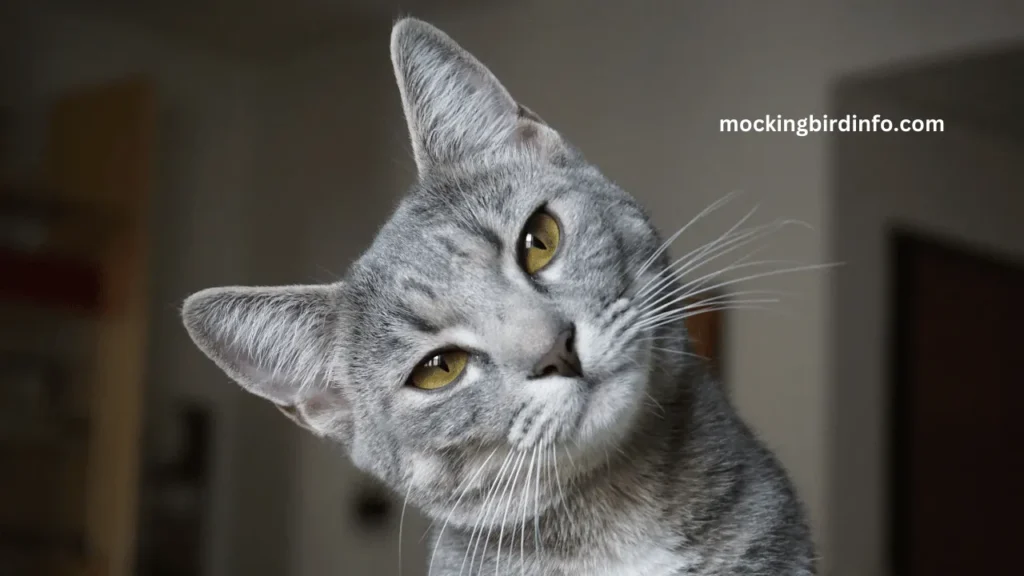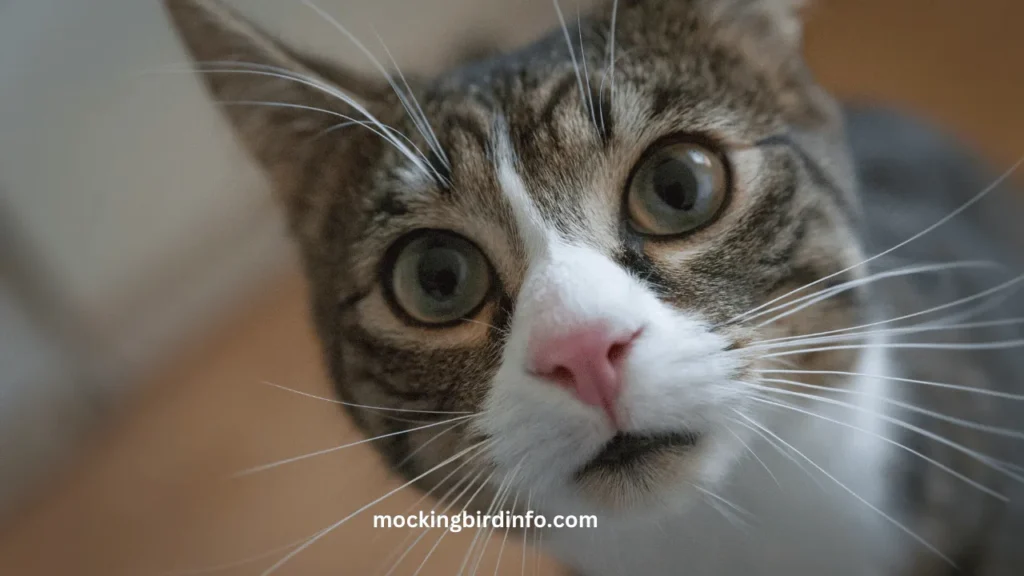Have you ever seen a mockingbird take on a larger animal with unmatched courage? Known for their beautiful songs and fiercely territorial nature, mockingbirds are fearless defenders of their nests.
If you’ve noticed a mockingbird swooping aggressively at a neighborhood cat, you may wonder: “Are mockingbirds really bold enough to attack cats?” This behavior, while surprising, has a simple explanation rooted in nature.
Mockingbirds are notorious for their protective instincts, especially during breeding season. Their bold behavior stems from a need to safeguard their territory, eggs, and chicks from perceived predators.
Cats, with their natural curiosity and hunting instincts, often wander into mockingbird territories, sparking these dramatic confrontations. However, it’s important to understand that these attacks are usually defensive, not outright aggression.
In this blog, we’ll dive deep into the factors that trigger mockingbird aggression toward cats, the nature of these attacks, and the risks involved for both species.
More importantly, we’ll explore ways to minimize conflicts, fostering a balance between our beloved pets and the wildlife sharing their environment.

Contents
Factors Triggering Mockingbird Aggression
Mockingbirds are highly territorial birds, particularly during the breeding season, which typically spans from spring to early summer.
During this time, they aggressively protect their nests from anything they perceive as a threat, including cats. Their defensive nature is not limited to predators—they will even confront much larger animals, including humans.
Cats are often seen as predators by mockingbirds, regardless of whether the cat is actively hunting or merely wandering nearby. This perception is due to the natural instinct of mockingbirds to protect their young, even at the cost of confronting formidable foes.
A prowling cat near a nest can trigger the bird’s defensive behavior almost immediately. It’s also worth noting that individual mockingbirds vary in their aggression levels.
Some may ignore a passing cat, while others will react fiercely, depending on their personality, environmental stressors, or proximity to their nests.
This variability makes it difficult to predict how a mockingbird might behave toward a specific cat.
Nature of Mockingbird Attacks
Mockingbirds use a variety of tactics to defend their territory, with dive-bombing being the most common. This involves flying swiftly at the intruder, often coming within inches of their target, to startle and deter them.
For cats, this behavior can be alarming, as the mockingbird’s quick movements create an intimidating display. In addition to dive-bombing, mockingbirds rely on loud vocalizations to ward off potential threats.
Their sharp, repetitive calls serve as a warning signal, not just to the intruder but also to other nearby mockingbirds, who may join the defense effort. This teamwork can amplify the intensity of their response.
Physical attacks on cats are rare but not unheard of. Mockingbirds may peck at a cat’s back or head if the feline ventures too close to their nest.
While these attacks are generally harmless, they can occasionally lead to minor scratches or other injuries, especially if the bird’s beak makes contact with sensitive areas.

Potential Risks to Cats and Mockingbirds
For cats, mockingbird attacks are usually more of a nuisance than a genuine threat. The sharp dive-bombs and pecks might scare or startle a cat, but they rarely result in significant injuries.
However, repeated harassment could lead to stress, particularly for younger or more timid cats. Mockingbirds, on the other hand, face their own risks when confronting cats.
Cats are natural hunters, and an overly bold mockingbird could inadvertently provoke a cat’s predatory instincts. This dynamic poses a greater threat to the mockingbird, as a determined cat can catch and kill birds with alarming ease.
Additionally, these interactions can lead to habitat disturbance. Frequent conflicts may cause stress for both species and disrupt the natural behavior of mockingbirds, particularly during nesting season. This stress could impact their breeding success and overall health.
Minimizing Conflict
Creating safe spaces for both cats and mockingbirds is key to minimizing conflicts. For cat owners, providing indoor enclosures or supervised outdoor time can reduce the chances of their pets wandering into bird territories.
This not only protects mockingbirds but also keeps cats safe from potential injuries. Deterring mockingbirds from specific areas can also help.
Non-harmful methods, such as using reflective objects or noise deterrents, can make certain spots less attractive to birds. Planting bird-friendly vegetation away from areas where cats roam can also encourage mockingbirds to nest in safer locations.
Promoting coexistence is the ultimate goal. Understanding the natural instincts of both cats and mockingbirds allows for better management of their interactions.
Simple steps, like keeping cats indoors during nesting season and educating others about wildlife behavior, can go a long way in fostering harmony.
Observing Mockingbird Behavior
Mockingbirds are fascinating creatures, and their behavior provides insight into the natural world. Observing their interactions with cats can be a reminder of the delicate balance between wildlife and domestic animals.
By respecting their territorial instincts and taking steps to reduce conflicts, we can enjoy the beauty of mockingbirds without compromising the safety of our pets.
Mockingbirds are highly vocal and often perch in visible locations, making them easy to spot. Watch for their signature white wing flashes during flight or listen for their impressive mimicry of other birds. Understanding their behavior helps us appreciate their role in local ecosystems.
Conclusion
Mockingbirds may occasionally attack cats, but these interactions are driven by defensive instincts rather than outright aggression. Their bold behavior stems from a need to protect their nests and young, especially during breeding season.
For cats, these confrontations are generally harmless, though they can sometimes result in minor injuries or stress. To reduce these conflicts, it’s important to create environments where both species can thrive.
Responsible pet ownership, including supervised outdoor time for cats, can protect both pets and wildlife. Meanwhile, understanding the natural behavior of mockingbirds helps us coexist peacefully with these fascinating birds.
In the end, the interactions between mockingbirds and cats remind us of the complex relationships between domestic animals and wildlife. By taking simple steps to foster harmony, we can ensure a safer, more balanced environment for all.
FAQs
1. Do mockingbirds attack cats often?
No, mockingbirds attack cats rarely and usually only when defending their nests or territory.
2. Why do mockingbirds attack cats?
Mockingbirds perceive cats as threats to their nests, especially during breeding season.
3. Can mockingbirds harm cats?
Mockingbirds rarely cause serious harm to cats, though they may inflict minor scratches or wounds.
4. How do mockingbirds attack cats?
Mockingbirds typically use dive-bombing and loud vocalizations to intimidate cats.
5. Are mockingbirds in danger from cats?
Yes, cats pose a greater threat to mockingbirds, as they are natural predators capable of killing birds.
6. How can I stop my cat from bothering mockingbirds?
Keep your cat indoors or provide supervised outdoor time to prevent encounters with mockingbirds.








